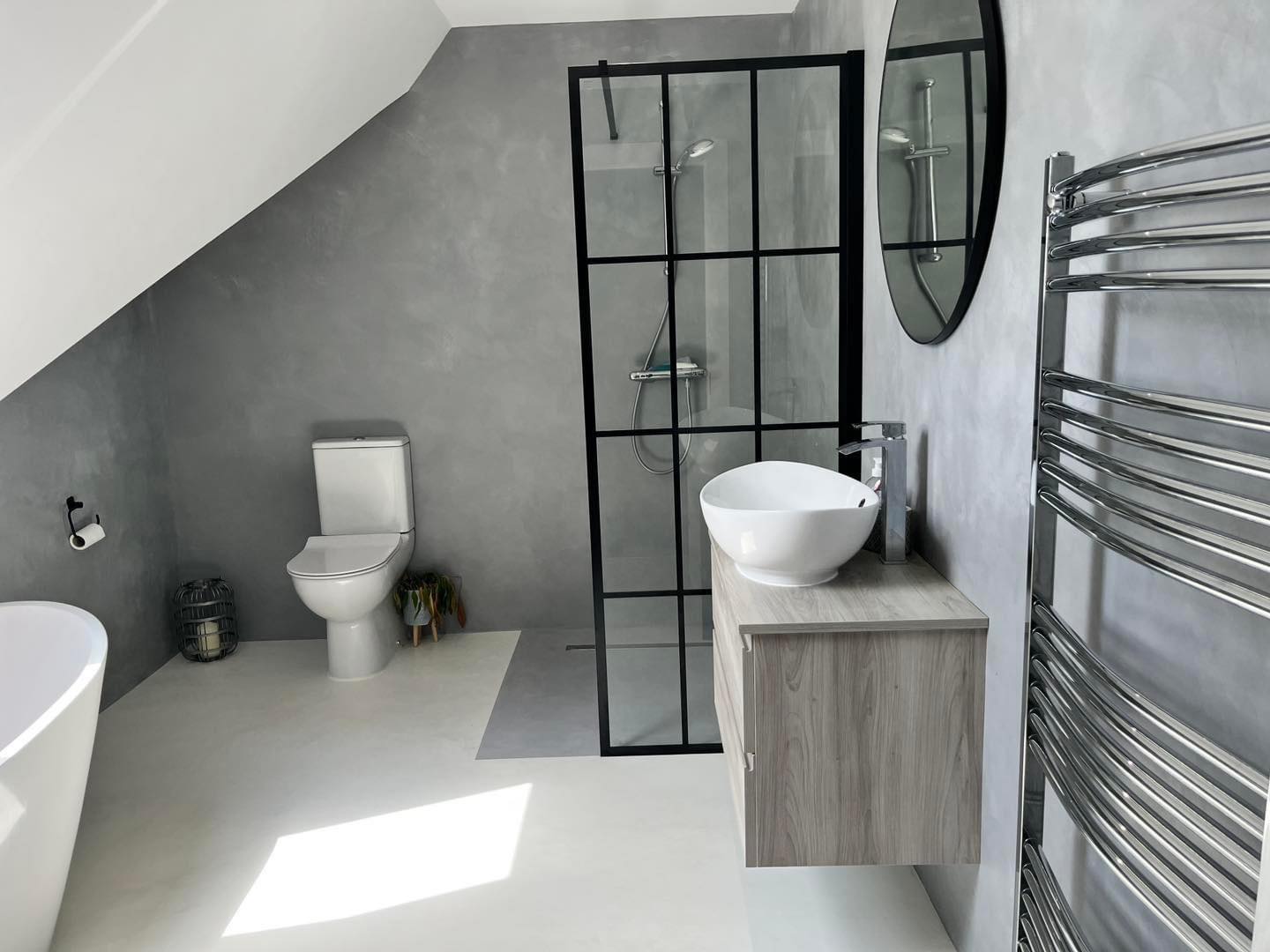Using Multiple Microcement Colors in the Same Application

Share
- Bathroom
- Eco-friendly
- Flooring
- Microcement
- Microcement Application
- Microcement Floor
- Microcemento
- Minimalist
- Water-resistant
Microcement in general is a very versatile material, that can be coloured to bespoke options and applied in unique textures. But its versatility is further enhanced by the fact that multiple colours can be used in the same application, with several different techniques.
So how can separate colours be used in these types of applications?
Techniques for Using Multiple Colours
Layering and Blending:
If one wants to avoid sharp edges, it’s a great idea to opt for a layered and blender application, to create an ombre or gradient effect. This can be done by layering different colours whilst the decorative coat is still wet, which will allow for the colours to be blended.
Geometric Patterns:
To create interest and patterns on different scales, tape and stencils can be used to create sharp lines for geometric patterns. This is a particularly great technique for modern and abstract interiors.
Marbling Effect:
For an elegant feel, experienced applicators can create a marble-like finish, which requires a very delicate technique, and a lot of skill and experience to ensure an authentic feel.
Zoning:
To add interest for large-scale applications, or where Microcement is used across different surfaces, it’s a good idea to opt for the zoning technique.
Creating a divide between surfaces by applying contrasting colours, can create interest in these areas.
Inlays and Inserts:
Adding emphasis by highlighting certain areas can be done by creating decorative inlays or inserts of different colours. This can be used as part of the finish on shelvings, fixtures, floor patterns and many more.
Colour Selection:
Regardless of which application you go for, it’s important to consider the overall design scheme and how different colours complement each other. The presence of natural and artificial lighting and their impact on the different tones is also important to consider.
Expertise:
Certain techniques and applications require more skill and experience than others, therefore, it’s important to hire experienced professionals who understand the material, both its functional and aesthetic aspects.
To explore our neutral and bright colour selection for our Continuo Microcement Kit, click here for a mood board set!
If you are interested in learning the professional application of Microcement, check out our beginner and advanced courses!
Conclusion
Microcement is a versatile material that can not only be bespoke coloured, but different colours can also be applied in the same decorative layer, or directly next to each other. These multiple colour applications can be achieved in several different ways, each of them requiring preparation, technique and skill. Regardless of the decorative finish created, the technical instructions should be strictly followed to ensure the functional properties of the microcement stay intact.
Photo credit to DQ Surface Designs
@dq_surface_design_training
